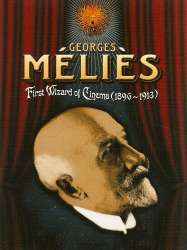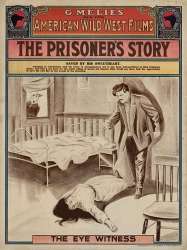The River Wanganui est un film réalisé par Gaston Méliès
The River Wanganui (1913)

Si vous aimez ce film, faites-le savoir !
Réalisé par Gaston Méliès
The River Wanganui is a 1913 documentary shot in New Zealand in 1912 on his 1912-13 South Pacific film-making voyage by French director Gaston Méliès. Like many of his films shot on that trip it is now lost.
The film was released in the USA in 1913, and was described then as a trip up New Zealand’s most picturesque river known as the Rhine of that country. The river is now called the Whanganui River.
In September 1912 press reports said that:
There will be a big Maori gathering shortly at Paranui, a place some 15 miles above Pipiriki, on the Wanganui River, to open a new native meeting-house. Several hundreds of Maoris from all parts of the district are expected to attend. Among the visitors will be the Melies Picture Company, who anticipate finding excellent materials for the kinematograph in the typical Maori scenes.
A later press report in October 1912 said that:
Mr Edmund Mitchell, a well-known novelist and journalist arrived at Wellington from San Francisco by the Aorangi last week with Mr Gaston Melies a moving-picture manufacturer with a full dramatic company on a tour of the Pacific for film-making purposes .... (the Aorangi arrived on 12 September via Rarotonga and Papeete)
The Méliès Company party of 14 (excluding Edmund Mitchell the novelist, who was to write screenplays) left San Francisco on 24 June 1912,
and by 4 November 1912 had left New Zealand for Australia. They were in Wellington for a week, and during two weeks in Rotorua they took many pictures of Maori life, and had several of the most picturesque legends acted before the camera.
Méliès made three feature films in New Zealand during his stay.
They are Hinemoa, How Chief Te Ponga Won His Bride and Loved by a Maori Chieftess. Méliès sent his film to the United States for post-production treatment, so it is doubtful if any were shown in New Zealand.
According to Sam Edwards, Méliès made five scenic films and three feature films or dramas in New Zealand.
Other 1913 Méliès films about New Zealand from the Internet Movie Database (links below) are:
A Trip to the Waitomo Caves of New Zealand (documentary)
A Trip through the North Island of New Zealand, from Auckland to Wellington (documentary)
In the Land of Fire (drama according to IMDb)
Commentaires
Postez un commentaire :
Suggestions de films similaires à The River Wanganui
Il y a 8 films avec le même réalisateur, pour avoir au final 8 suggestions de films similaires.Si vous avez aimé The River Wanganui, vous aimerez sûrement les films similaires suivants :

Loved by a Maori Chieftess (1913)
Réalisé par Gaston Méliès
Wena a Māori princess is told by a sourceress that "she will marry a white man, tall and handsome, with eyes as fair as the sky and a fair beard". Chadwick a trapper who was hunting in the bush is captured and bought to the pa to be burnt at the stake to provide "white mans meat". She recognises Chadwick as that man, but the young chief Te Heuheu arrives to court her. She helps Chadwick escape and they swear eternal love. Chadwick goes through the geysers to his hut on the lake, but they are discovered there by Te Heuheu. Chadwick is threatened with death, so she returns to the tribe. But when she is near death from pining for him her father the chief relents. Chadwick is made a chief, she recovers and the tribe celebrates with a feast. Wena was probably played by Maata Horomona of Ohinemutu.

Réalisé par Gaston Méliès
Thèmes La mer, Transport
The story is set in the Waikatu (Waikato?) where two Māori tribes are at war, with the story of the love between the young chief Te Ponga and the beautiful daughter Puhuhu daughter of the rival chief, similar to the legend of Hinemoa and Tutanekai.
 , 15minutes
, 15minutesRéalisé par Georges Méliès, Gaston Méliès
Origine France
Genres Comédie
Note50%





Poursuivis par leurs débiteurs, la famille Bourrichon décide de s'enfuir. Ils feront un éprouvant voyage en train et passeront une nuit dans une auberge hantée avant d'être rattrapés et de devoir payer leurs dettes.

The Prisoner's Story (1912)
Réalisé par Georges Méliès, Gaston Méliès
Origine Etats-Unis
Genres Thriller, Comédie
Acteurs Evelyn Selbie
Note70%






Mexican as It Is Spoken (1911)
Réalisé par Georges Méliès, Gaston Méliès
Origine Etats-Unis
Genres Comédie

Under the Stars and Bars (1910)
, 13minutesRéalisé par Francis Ford, Gaston Méliès
Acteurs Francis Ford
Note60%






Hinemoa (1913)
Réalisé par Gaston Méliès
Thèmes La mer, Transport
No copy of Hinemoa survives, but the film would have told the story of the legend of Hinemoa and Tutanekai.

The Immortal Alamo (1911)
, 20minutesRéalisé par Gaston Méliès
Origine Etats-Unis
Genres Drame, Guerre, Historique
Acteurs Edith Storey, Francis Ford, William Clifford, William Clifford, Richard Stanton, William A. Carroll
Note67%





The film is a historical drama that depicts General Antonio López de Santa Anna's attack on the Alamo Mission in San Antonio in the Battle of the Alamo. The film was made on location in the Alamo and introduced historical figures such as Davy Crockett and William B. Travis. The film has a romance element where Mexican spy Senor Navarre has affections for Lieutenant Dickenson's wife, Lucy. When the Mexican Army lays siege, Colonel Travis calls upon his men to send word to General Sam Houston and Lieutenant Dickenson volunteers. As soon as he departs, Senor Navarre attempts to charm Lucy Dickenson, but she is repulsed by his advances and is saved from being overpowered by Colonel Travis. Senor Navarre is forced out and proceeds to provide General Santa Anna information on the mission in return for the right to take a survivor to be his bride. After the Alamo falls, only a few women survive, among them is Lucy Dickenson. Senor Navarre holds General Santa Anna to the promise and prepares to marry her the next day. Before the marriage can be performed Lieutenant Dickenson and the reinforcements arrive and capture Senor Navarre. Lieutenant Dickenson avenges his wife's honor by slaying Senor Navarre with his sword. The final scene of the film shows Santa Anna surrendering as a "common soldier".
 Connexion
Connexion